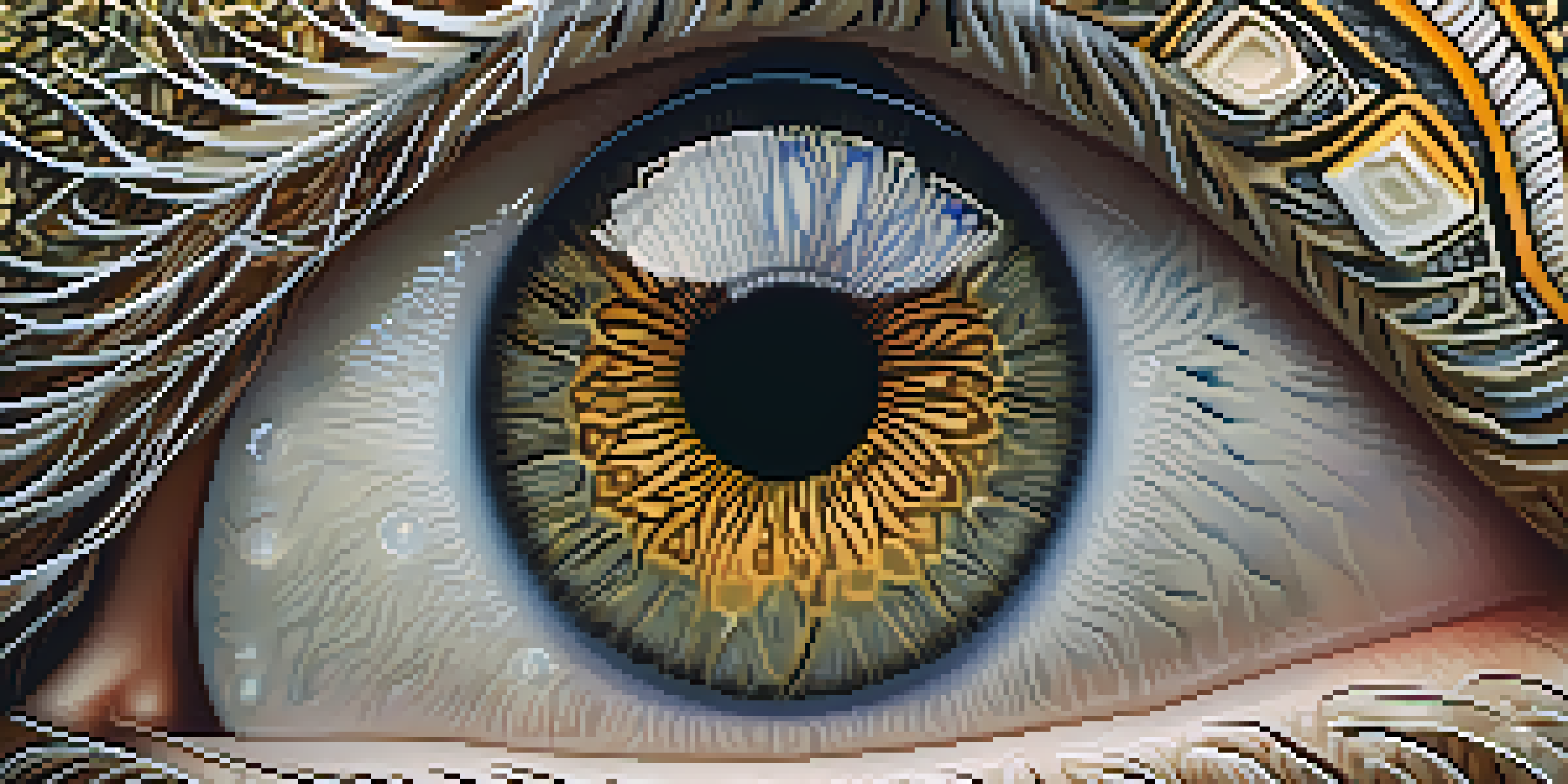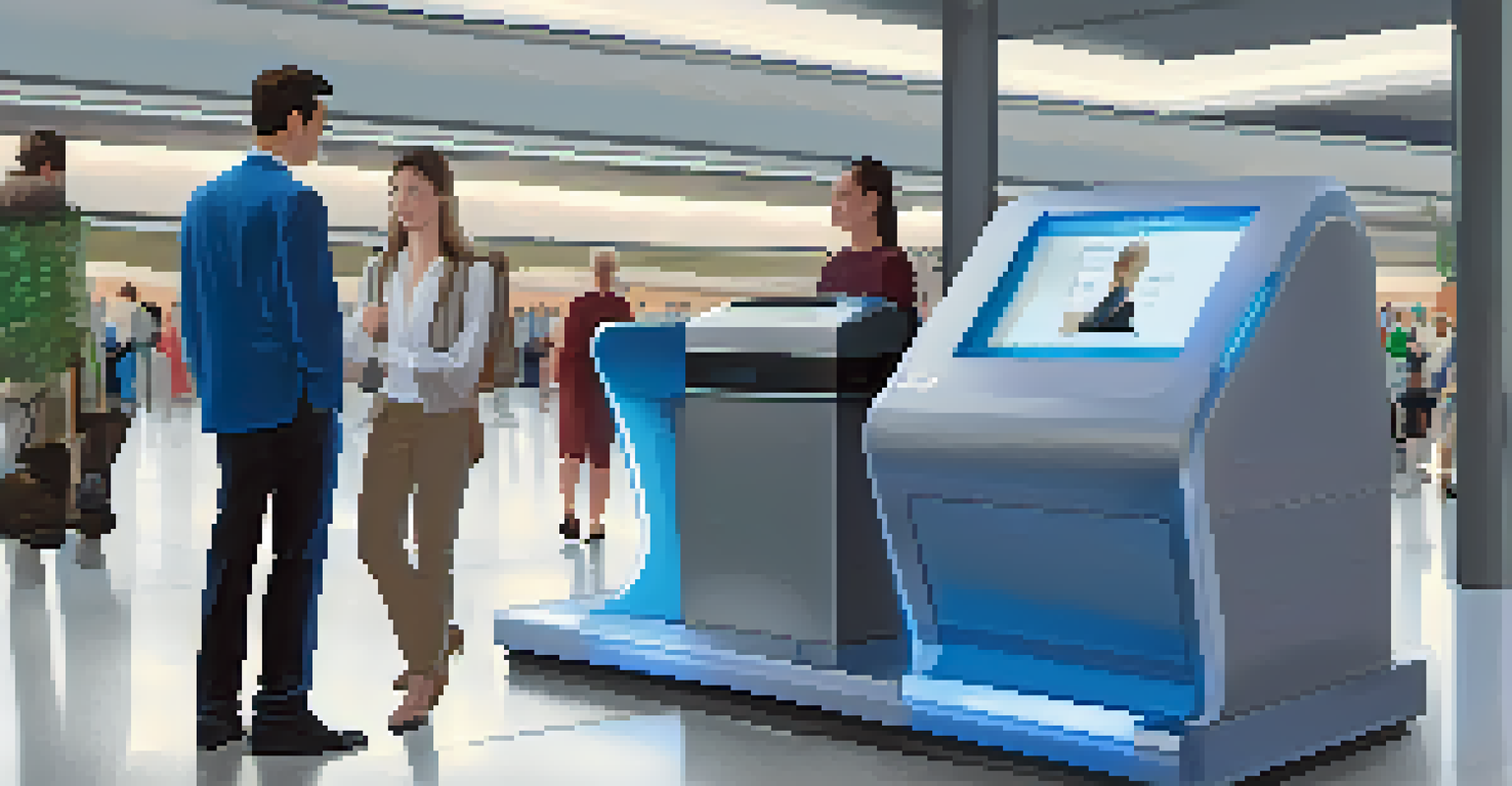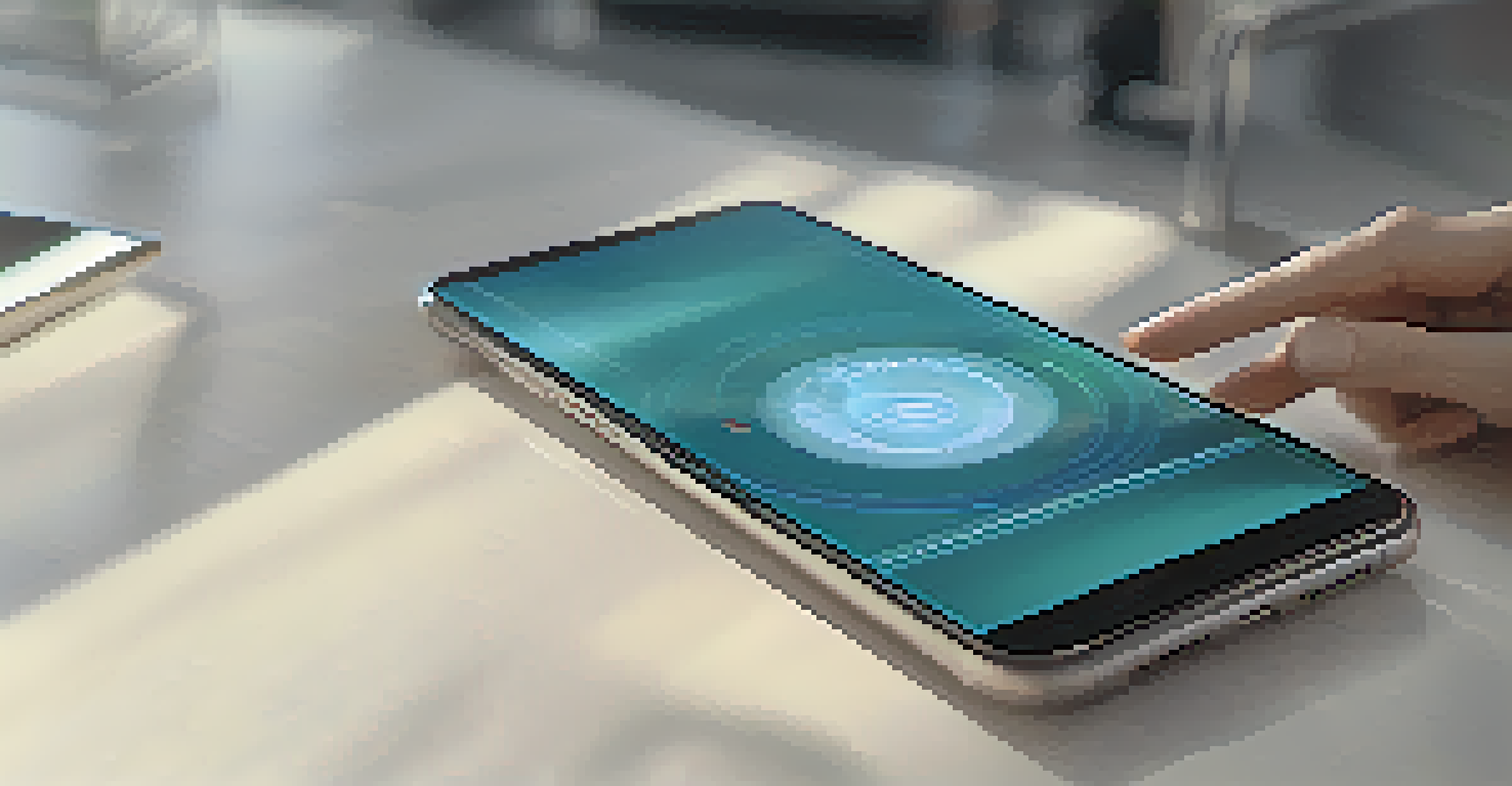Iris Scanning: A Secure Method for Identity Verification

What is Iris Scanning and How Does It Work?
Iris scanning is a biometric technology that uses the unique patterns in the colored part of your eye, known as the iris, to verify identity. This method captures a high-resolution image of the iris, which is then analyzed using sophisticated algorithms. The distinct characteristics of each individual's iris make it an incredibly reliable form of identification, much like a fingerprint, but with even greater accuracy.
Biometrics are the fingerprints of the future.
Unlike other biometric methods, such as facial recognition or voice verification, iris scanning is less affected by changes in appearance, such as aging or cosmetic alterations. The iris remains stable throughout a person’s life, ensuring a consistent and reliable identifier. This stability makes iris scanning a preferred choice for high-security environments where identity verification is crucial.
As technology advances, iris scanning systems have become more accessible, with devices ranging from specialized cameras to smartphone applications. These innovations mean that iris scanning is no longer limited to high-security facilities but is now being integrated into everyday technology, enhancing security across various platforms.
Advantages of Iris Scanning Over Traditional Methods
One of the standout advantages of iris scanning is its accuracy. With a false acceptance rate of less than 0.1%, it significantly outperforms traditional methods like passwords or ID cards, which can be easily forgotten or forged. This high level of precision ensures that the person trying to gain access is indeed who they claim to be, reducing the risk of identity theft.

Another benefit is the speed of verification. Iris scanning can authenticate individuals in seconds, making it ideal for settings where time is of the essence, such as airports or secure facilities. This efficiency not only streamlines operations but also enhances user experience, as individuals can move through checkpoints quickly without sacrificing security.
Iris Scanning: A Reliable Identifier
Iris scanning uses unique eye patterns for identity verification, offering high accuracy and stability over time.
Moreover, iris scanning is a non-invasive method of identification. Unlike fingerprint scanning, which can sometimes lead to wear on fingerprint sensors, iris scanning is contactless, reducing hygiene concerns. This aspect is particularly relevant in today's health-conscious environment, where minimizing physical contact is essential.
Applications of Iris Scanning in Various Industries
Iris scanning has found applications across numerous industries, from security and finance to healthcare and travel. In airports, for instance, biometric gates equipped with iris scanners enable swift passenger verification, enhancing security while reducing wait times. This application not only improves efficiency but also boosts passenger satisfaction.
The future belongs to those who prepare for it today.
In the financial sector, banks and institutions are leveraging iris scanning for secure transactions and account access. By using iris recognition, these organizations can enhance their security protocols, ensuring that only authorized users can access sensitive information. This helps in building trust with customers who are increasingly concerned about data breaches.
The healthcare industry is also embracing iris scanning to protect patient information. Secure access to medical records is vital, and iris scanning provides a reliable means to ensure that only authorized personnel can view sensitive data. This application safeguards patients' privacy while maintaining compliance with regulations.
Challenges and Limitations of Iris Scanning Technology
Despite its many advantages, iris scanning technology does have challenges. One significant limitation is the requirement for proper lighting and clear visibility of the eye for accurate scanning. Poor lighting conditions or obstructions can hinder the scanning process, making it less effective in certain environments.
Another challenge is the potential for privacy concerns. As biometric data becomes more prevalent, individuals may worry about how their iris data is stored, used, and shared. Transparency in data handling practices is critical to addressing these concerns and ensuring public trust in iris scanning technologies.
Speed and Security Combined
With quick authentication times and a low false acceptance rate, iris scanning enhances security without slowing down processes.
Finally, while iris scanning is highly secure, it is not entirely foolproof. There have been instances of spoofing, where individuals attempt to use images or videos of irises to gain unauthorized access. Continuous advancements in technology are needed to combat such threats and maintain the integrity of iris scanning systems.
The Future of Iris Scanning in Identity Verification
The future of iris scanning looks promising as advancements in technology continue to enhance its capabilities. With ongoing research and development, we can expect more sophisticated algorithms that improve accuracy and reduce the chances of spoofing. These innovations will further solidify iris scanning as a reliable method of identity verification.
Additionally, as more industries adopt biometric technology, the integration of iris scanning into everyday devices like smartphones will likely become commonplace. This shift will not only streamline identity verification but also empower individuals with greater control over their personal security, allowing them to unlock devices and access accounts seamlessly.
Moreover, as global security concerns rise, the demand for secure verification methods will only increase. Iris scanning, with its unique advantages, is positioned to meet this demand, becoming a standard in various sectors. The future may very well see iris scanning as a ubiquitous form of identity verification, enhancing security across the board.
Comparing Iris Scanning to Other Biometric Methods
When it comes to biometric identification, iris scanning stands out among its peers, such as fingerprint and facial recognition. While fingerprint scanners have been around for a long time, they face issues with wear and tear, leading to inaccuracies over time. In contrast, iris patterns remain stable, providing a more durable solution for identity verification.
Facial recognition technology, although widely used, can struggle with accuracy in varying lighting conditions or with individuals wearing accessories like glasses or masks. Iris scanning, on the other hand, maintains its reliability regardless of these factors, making it a better choice for environments where conditions can vary significantly.
Expanding Applications Across Industries
Iris scanning is being adopted in diverse fields such as finance, healthcare, and travel, improving security and user experience.
Ultimately, each biometric method has its strengths and weaknesses, but iris scanning's unique combination of accuracy, speed, and non-invasiveness makes it a formidable contender in the quest for secure identity verification. Organizations looking to implement biometric systems should consider iris scanning as a top option for its many benefits.
Conclusion: Embracing Iris Scanning for Security
In conclusion, iris scanning represents a significant advancement in identity verification technology. Its accuracy, speed, and non-invasive nature make it an appealing choice for various industries, from travel to finance. As concerns about security and privacy continue to grow, adopting reliable methods like iris scanning becomes essential.
While there are challenges to address, the ongoing advancements in this technology promise a bright future for iris scanning. With increasing integration into everyday devices and systems, it’s likely that more people will encounter this method as a standard form of identity verification.

Ultimately, embracing iris scanning can enhance security protocols and provide individuals with a seamless experience. As we move toward a more digital future, the role of iris scanning in protecting our identities will only become more critical.